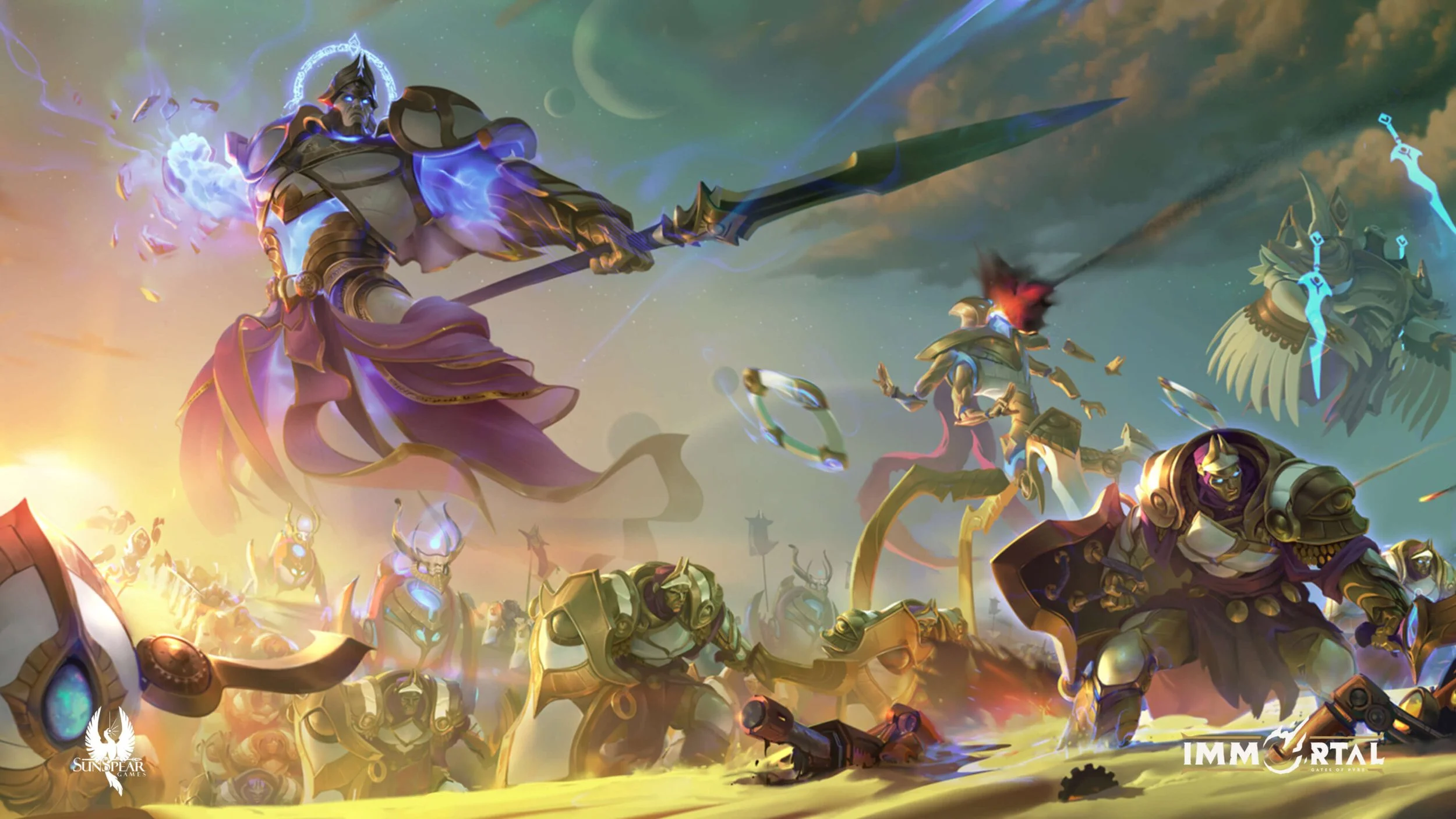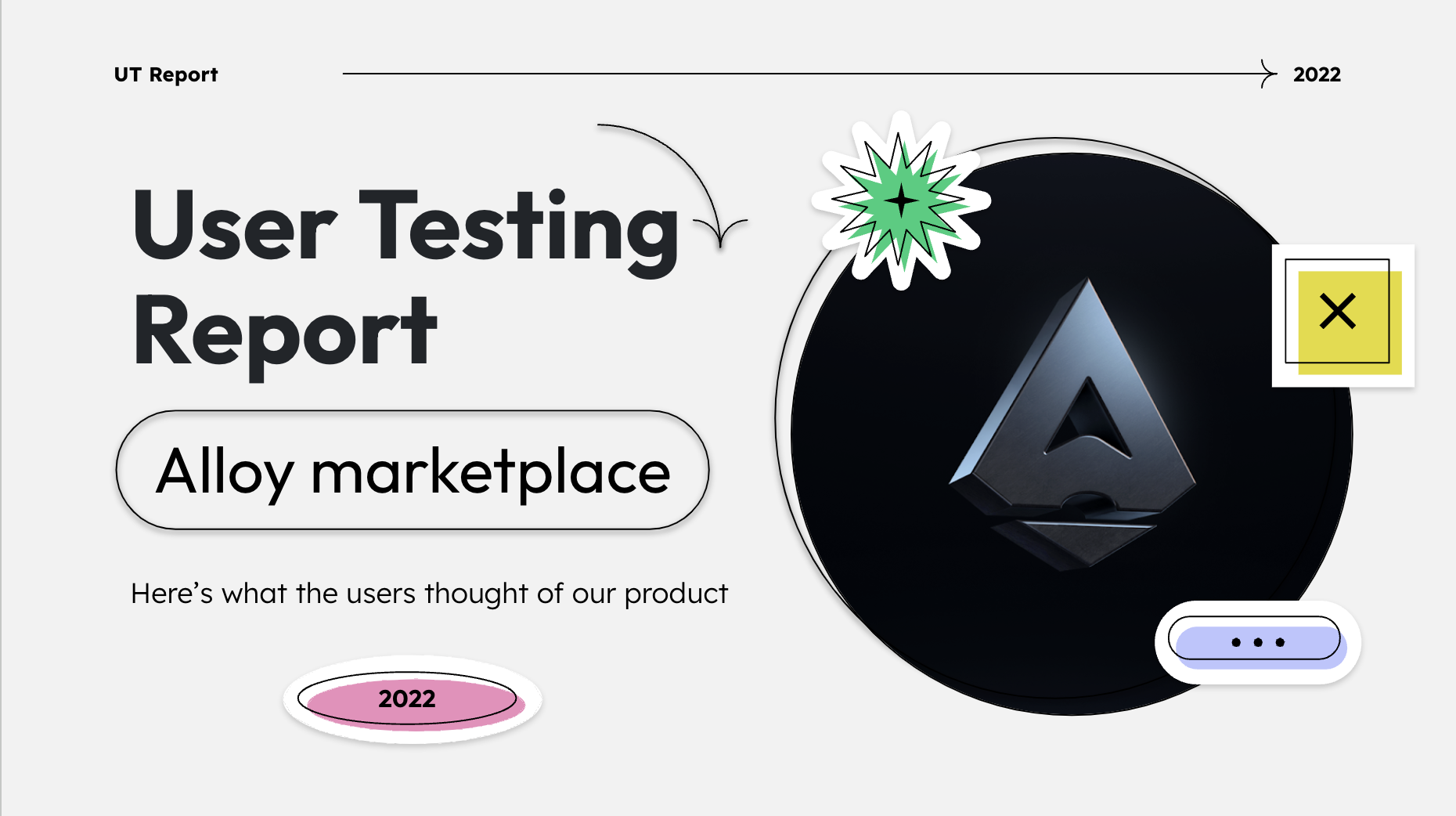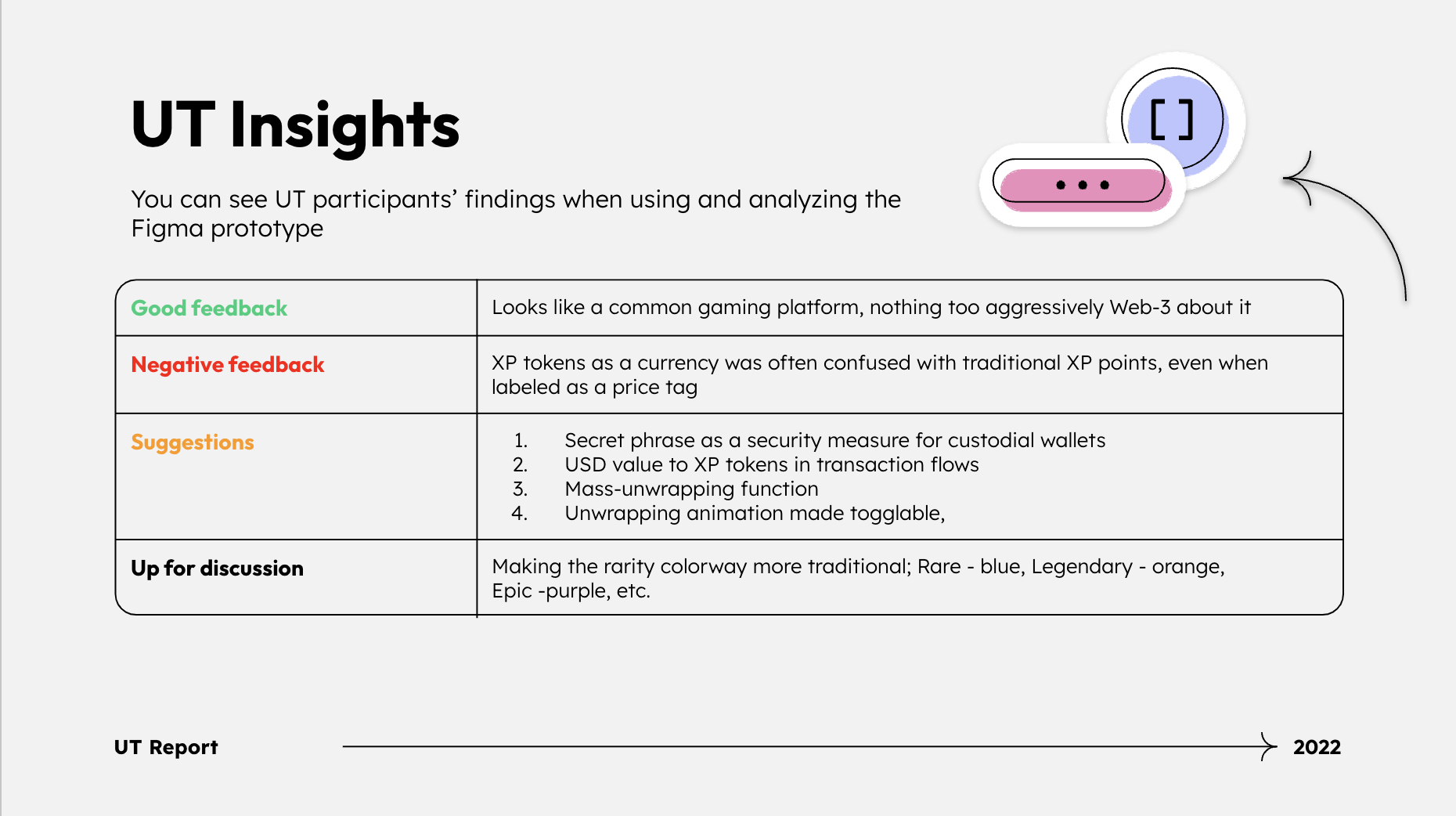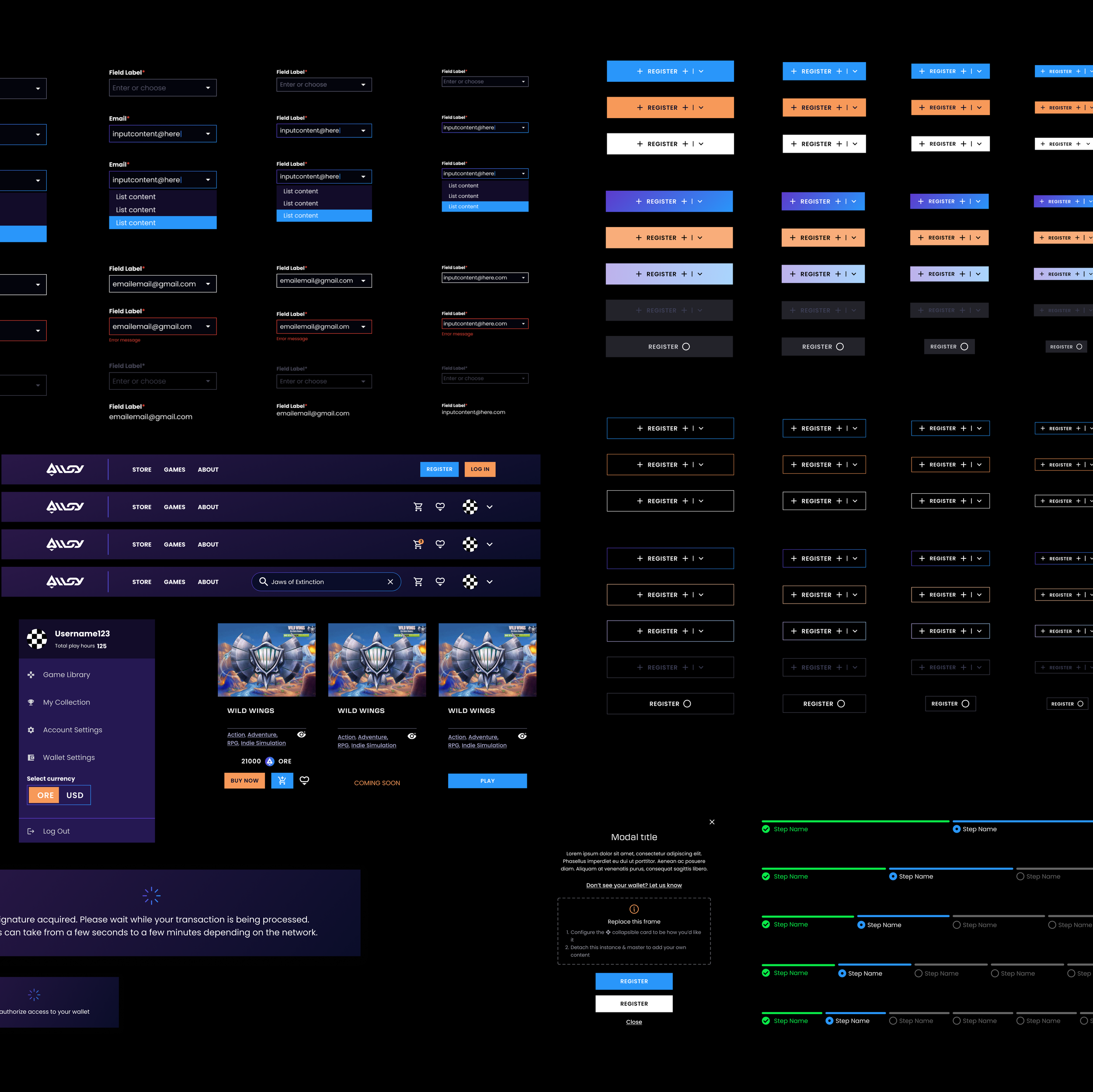alloyUI Design | UX Research & Design | Gaming
Alloy is a new generation gaming platform ecosystem, built with Web 3 tools and integration in mind.
Alloy Assets solve the issue of disconnected and closed-world gaming through interoperability: Every Alloy Asset is designed to unlock in-game offerings in all games in the ecosystem.
2022
USA
As the Principal Product Designer on a pivotal project addressing the core challenges in the gaming industry, my role was instrumental in shaping the user experience across multiple dimensions of the platform. This project offered a unique opportunity to delve deep into the gaming world, focusing on critical issues like ownership, stakeholder voice, financing challenges, and the credibility of Web 3 gaming.
Surveys and Interviews Conducted detailed surveys and interviews with various stakeholders in the gaming industry, including game developers, publishers, players, and investors, to gather a wide range of perspectives on the identified issues.
Case Studies Analyzed successful and unsuccessful gaming projects, especially those involving web3 technology, to identify patterns and insights related to ownership, stakeholder voice, and financing challenges.
Market Analysis Reviewed current market trends and projections in both traditional and web3 gaming sectors to understand the economic and technological factors influencing these issues.
User Testing Organizing focused user testing sessions to observe real-time interactions and reactions to current gaming models, particularly in the context of ownership and player engagement.
The research aimed to provide actionable insights into how the gaming industry can address these fundamental issues. By understanding the nuances of each challenge, the research aimed to pave the way for more user-centric, sustainable, and innovative gaming experiences, potentially leveraging Web3 technologies in a credible and user-friendly manner.
Lack of Ownership Understanding the players' perspective on game assets ownership, including digital assets in traditional and web3 gaming environments.
No Real Voice Investigating how players and other stakeholders currently influence game development and decision-making processes, and what changes they seek.
Difficult Financing Road Analyzing the financial challenges faced by game developers and publishers, especially in the early stages of development and in adopting new technologies like web3.
Credibility of Web3 Gaming Assessing the skepticism or acceptance of web3 gaming among various user groups, focusing on issues of trust, security, and perceived value.
One of the cornerstones of my approach was conducting over 40 user interviews. These interviews were diverse, involving players, game developers, crypto lawyers, influencers and administrative personnel. This extensive interaction helped me gain a profound understanding of the different perspectives and needs within the gaming ecosystem. It was an enlightening experience that went beyond gathering data; it was about empathizing with the users and comprehending their experiences, frustrations, and aspirations in the gaming world.
Expanding on the user testing aspect of your role as Principal Product Designer in the gaming industry project, it becomes evident how this process was crucial in identifying and understanding the diverse needs of six distinct user personas.
The insights gained from these diverse user personas were instrumental in shaping a multifaceted product. For each persona, the design had to be tailored to meet specific needs while maintaining a cohesive and intuitive user experience across the platform. This involved creating a flexible design system that could adapt to various user requirements and preferences, ensuring that each group felt heard and catered to.
Hardcore Gamer User testing with hardcore gamers focused on their deep engagement and frequent interaction with games. Tests were designed to understand their expectations for immersive experiences, complex gameplay, and how ownership and voice in the game's development affected their long-term commitment.
Midcore Gamer Midcore gamers, who balance gaming with other interests, provided insights into the casual yet consistent gaming experience. User testing here aimed to gauge their preferences for accessibility, ease of use, and the balance between challenging and enjoyable gameplay.
Pro Gamer Testing with pro gamers offered valuable data on the requirements for high-performance, competitive gaming environments. Their feedback was crucial in designing features that supported skill development, competition, and community engagement, as well as aspects related to monetization and career growth in gaming.
NFT Investor NFT investors brought a financial perspective to gaming, particularly in the context of web3 gaming. User tests here aimed to understand their expectations for asset security, profitability, and the credibility of digital assets within gaming ecosystems.
Established Game Dev Company Collaborating with established game development companies during testing helped in understanding the needs of large-scale game production. Their feedback was pivotal in designing admin and development tools that could handle complex project management, large team collaboration, and robust analytics.
Indie Game Dev Company Indie game developers provided insights into the challenges faced by smaller teams with limited resources. Their input guided the design of user-friendly development tools that were accessible yet powerful, fostering innovation and creativity in game development without the need for extensive technical knowledge or resources.
Another significant achievement was building an exhaustive design system. This system wasn't just a collection of reusable components and guidelines; it was the visual and functional language of the entire project. It ensured consistency and coherence across all interfaces, while also providing the flexibility needed to cater to the diverse needs of our different user groups. The design system became the project's backbone, streamlining the design process and ensuring a unified user experience.
The most challenging and rewarding part of my role was designing the screens for the entire project, encompassing the user end, game developer interface, and the administrative backend. Each of these interfaces had its unique requirements and challenges:
User End The design for the user end focused on intuitiveness and engagement, ensuring that players felt a sense of ownership and had a voice in the gaming experience.
Game Developer Interface For the game developers, the interface needed to be powerful yet accessible, allowing them to harness the project's capabilities without getting overwhelmed by complexity.
Admin End The administrative backend was designed for efficiency and control, providing a clear overview and management capabilities for the platform’s overseers.
The design ensured that technology was accessible and beneficial to all users.
For game developers, both established and indie, the platform provided tools that simplified development processes, encouraged creative expression, and offered new avenues for monetization and growth.
The design tackled key industry issues such as lack of ownership, limited user voice, and the difficulties of financing and credibility in Web3 gaming. By providing solutions through design, the project contributed to advancing the gaming industry as a whole.










